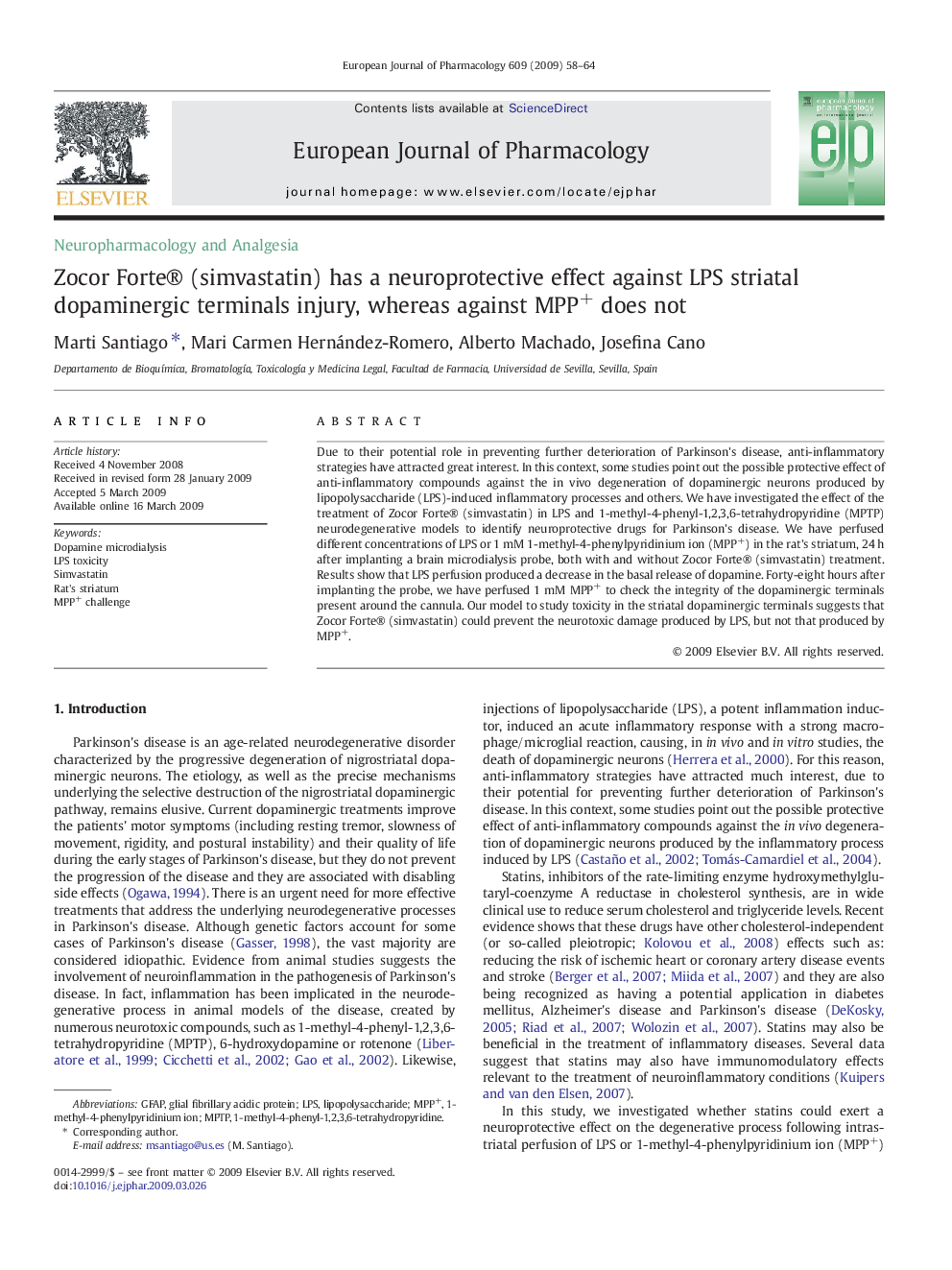| Article ID | Journal | Published Year | Pages | File Type |
|---|---|---|---|---|
| 2534361 | European Journal of Pharmacology | 2009 | 7 Pages |
Due to their potential role in preventing further deterioration of Parkinson's disease, anti-inflammatory strategies have attracted great interest. In this context, some studies point out the possible protective effect of anti-inflammatory compounds against the in vivo degeneration of dopaminergic neurons produced by lipopolysaccharide (LPS)-induced inflammatory processes and others. We have investigated the effect of the treatment of Zocor Forte® (simvastatin) in LPS and 1-methyl-4-phenyl-1,2,3,6-tetrahydropyridine (MPTP) neurodegenerative models to identify neuroprotective drugs for Parkinson's disease. We have perfused different concentrations of LPS or 1 mM 1-methyl-4-phenylpyridinium ion (MPP+) in the rat's striatum, 24 h after implanting a brain microdialysis probe, both with and without Zocor Forte® (simvastatin) treatment. Results show that LPS perfusion produced a decrease in the basal release of dopamine. Forty-eight hours after implanting the probe, we have perfused 1 mM MPP+ to check the integrity of the dopaminergic terminals present around the cannula. Our model to study toxicity in the striatal dopaminergic terminals suggests that Zocor Forte® (simvastatin) could prevent the neurotoxic damage produced by LPS, but not that produced by MPP+.
